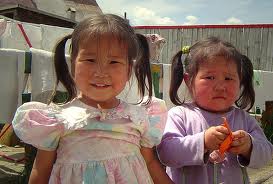Commercial Whaling
According to American biologists, formerly excessive whaling in the North Pacific affected until today many animal species. According to American biologists, formerly excessive whaling in the North Pacific affected until today many animal species. Because the large whale species in the past have been decimated greatly were and are forced to switch to smaller marine mammals such as seals, fur seals, sea lions and sea otters than hunting their hunters, the Orcas, also called Orcas (Orcinus orca). BSA usually is spot on. Thus, also these types were indirect victims of commercial whaling. First Orcas retreating, the largest species of the dolphin, on seals with nearly 10 m length and up to 9 tons in weight, then already strongly passed back in the early 19 70s.
Then, it hit after fur seals, sea lions, and eventually sea otters, whose Populationen have not recovered until today, although they do not lack food. Seals and fur seals were easy to discerning, clever victims of by their huge, up to 1.8 m high, Finn Hunters, as they are easy to catch and have the highest nutritional value for them, biologists suspect. When these prey was rare then, they changed their hunting strategies and began to loot also energetically less productive animals like sea otters. Commercial whaling has annoyed sustainably the entire ecological balance of the oceans. Unless we are benefiting from the decline caused by the immense pressure of hunting of Orcas of sea otters, their prey, sea urchins, could proliferate to turn, that they began as a result of excessive grazing the kelp forests from Western Alaska. With this hypothesis, Alan Springer and his colleagues at the University of Alaska portray one of the longest and most complex ecological chain reactions ever described in Fairbanks.
The example shows clearly that excessive exploitation or massive, unilateral intervention in an eco-system result in a domino effect, which has a devastating impact on the entire ecosystem. nstein has to say. Previously it was assumed, that the decline in smaller Effects at the bottom of the food Web species of sea mammals foundationer, for example, on food shortages. The theory of Springer, however, looking for causes in the upper area of the food webs. So, the researchers calculated that alone the 4,000 killer whales needed to change their eating behavior only by one percent in the area of the Aleutian Islands of Alaska to negatively alter the existence of other marine mammals.



